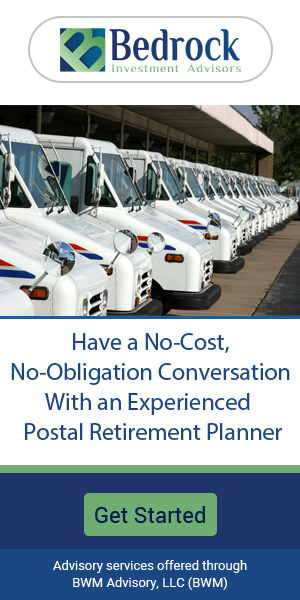Key Takeaways:
- Strategic TSP contributions and smart fund choices maximize retirement savings while aligning with personal goals.
- Periodic reviews and tweaks to your TSP ensure your savings stay on track with your evolving financial picture.
Mastering Your TSP: The Foundation of a Solid Retirement Plan
- Also Read: FAA, Law Enforcement, and Special Federal Employee Categories—Here’s What Makes Their Retirement Unique
- Also Read: Blending Private and Public Sector Retirement Plans Is Complicated—Here’s Where Couples Get It Wrong
- Also Read: The Silent Shift in Postal Service Retirement Benefits That Could Change Everything by 2026
In this article, I’ll break down key strategies for maximizing your TSP, from contributions to withdrawals, to help you retire on your terms.
1. Setting Up for Success: Understand Your TSP Options
To build a solid foundation, first familiarize yourself with the available TSP fund options. The TSP offers a range of funds that cater to different risk levels and goals:
- G Fund: Government Securities Investment
- F Fund: Fixed Income Index
- C Fund: Common Stock Index
- S Fund: Small Cap Stock Index
- I Fund: International Stock Index
- Lifecycle (L) Funds: Target-date funds that automatically adjust as you approach retirement
These funds provide a spectrum of risk and reward, from the ultra-safe G Fund to the growth-oriented C, S, and I Funds. As you get closer to retirement, your risk tolerance might change, and the Lifecycle (L) Funds can help by adjusting the fund mix for you.
2. Maximizing Your Contributions: A Key to Long-Term Success
One of the most effective ways to grow your TSP balance is by contributing as much as possible each year. For 2024, federal employees can contribute up to $23,000 to their TSP, with an additional $7,500 in catch-up contributions if you’re 50 or older. While it may seem ambitious to max out these contributions, even consistent, moderate contributions over time will build your retirement savings significantly.
Why Contributions Matter So Much
The power of compound growth lies in both the amount you invest and the length of time it’s invested. If you’re just starting your federal career, even small contributions have decades to grow. If you’re closer to retirement, maximizing contributions can help you reach your retirement goals in less time, especially when you factor in any employer matching.
3. Choosing the Right Fund Mix for Your Goals
Choosing the right TSP fund mix largely depends on your investment time horizon and risk tolerance. Here’s a quick guide on how to tailor your fund choices:
- Early Career: In your early career, you can likely afford more risk, as you have decades for your investments to recover from any market downturns. A heavier allocation in the C, S, and I Funds may yield higher returns, though it comes with increased volatility.
- Mid-Career: As you move further into your career, it’s wise to gradually shift a portion of your investments to safer funds like the G and F Funds. Balancing high-growth potential with stability is key here.
- Late Career: As retirement approaches, stability becomes paramount. Reducing exposure to stocks and allocating more to the G Fund or using an L Fund close to your retirement target date can safeguard your savings.
Regularly reviewing and adjusting your fund allocation ensures your portfolio aligns with your retirement timeline and tolerance for risk.
4. TSP Matching: Don’t Leave Money on the Table
One of the best aspects of the TSP is the potential for matching contributions. If you’re a Federal Employees Retirement System (FERS) participant, the government will match up to 5% of your contributions. The breakdown is as follows:
- 1% automatic contribution, regardless of your own contributions
- Up to 4% matching contribution, based on how much you contribute
This match effectively doubles part of your contributions, so contribute at least 5% to take full advantage of this benefit.
5. Planning for Withdrawals: Avoid Common Pitfalls
Once you’ve accumulated a sizable TSP balance, it’s essential to plan for withdrawals carefully. Federal employees face specific rules when it comes to accessing their TSP savings, so consider these key points:
- Required Minimum Distributions (RMDs): Once you turn 73, RMDs require you to withdraw a certain portion of your balance each year. Failing to do so results in hefty penalties.
- Consider Tax Implications: Withdrawals from traditional TSP accounts are subject to income tax, while withdrawals from Roth TSP accounts aren’t, provided certain conditions are met. A mix of Roth and traditional TSP funds can give you flexibility in retirement by allowing you to manage your taxable income.
Having a distribution plan in place well before retirement can help avoid unnecessary tax bills and keep your income steady during retirement.
6. Taking Advantage of the Roth TSP Option
The Roth TSP is an invaluable option for federal employees. Unlike the traditional TSP, Roth contributions are made with after-tax dollars, meaning qualified withdrawals in retirement are tax-free. For younger employees, this can be especially attractive, as contributions will grow tax-free over decades.
If you’re unsure about the best approach, consider contributing to both traditional and Roth TSP accounts. This strategy allows you to diversify your tax liabilities, which can be helpful as tax rates fluctuate over time.
7. Staying the Course: Handling Market Volatility
Market volatility is an inevitable part of investing. Rather than trying to time the market or panicking during downturns, focus on a consistent strategy that aligns with your risk tolerance. Historical data shows that, over time, markets tend to recover and grow.
If you’re uncomfortable with too much risk or lack time to recover from downturns, shift to more stable options within your TSP, like the G Fund. But if you have a longer timeline, staying the course and even increasing contributions during downturns can potentially amplify your returns over time.
8. Reassessing Your TSP Regularly
Your financial goals and risk tolerance may change over time, and your TSP portfolio should reflect that. A best practice is to review your TSP balance and asset allocation annually or after significant life events like marriage, the birth of a child, or a job change.
Adjusting your TSP contributions or fund allocations every few years can help ensure your retirement savings remain aligned with your current situation and long-term goals. Even if only minor adjustments are needed, these regular check-ins will keep you on track.
Setting Up a Bright Future with TSP
With some thoughtful planning, your TSP can be a pivotal part of a comfortable, secure retirement. By understanding your options, maximizing contributions, selecting the right funds, and planning for eventual withdrawals, you’ll be well-equipped to make your TSP work hard for you. Remember that your TSP strategy is unique to you and should adapt as you move through different life and career stages.
Whether you’re starting out or nearing retirement, a proactive approach to your TSP can help you reach your financial goals and feel confident about the future.













